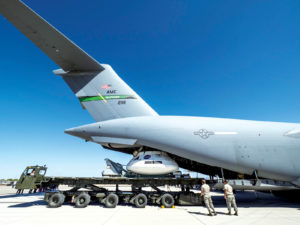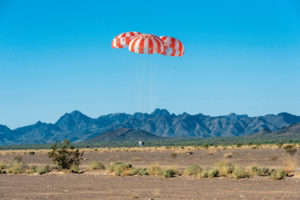
What does it take to get astronauts home safely from a deep-space mission as their crew module hits the earth’s atmosphere and slows from 20,000 mph to a mere 325 mph? A strong, agile parachute system.
NASA has been testing such a system for the Orion spacecraft. It consists of 11 parachutes, including three main parachutes that deploy at 9,000 feet in altitude. They expand to 116 feet in diameter and slow the vehicle from a speed of 130 mph to a landing speed of 17 mph. The system also includes cannon-like mortars and pyrotechnic devices that work in sequence to slow the capsule’s descent for a safe landing.
Made of a Kevlar®/nylon hybrid material, each of the three parachutes weighs 310 pounds and contains enough fabric to cover 80 yards of a football field. The nylon broadcloth is thin enough to see through, and has a mass that ranges from 1.2 to 2.0 ounces per square yard.
Along with the forward bay cover and drogue parachutes, they are packed for storage with a hydraulic press. Once packed, they have a density of about 40 pounds per cubic foot, like that of wood from an oak tree.
The parachute system was developed and tested by NASA and its partners. The parachutes were designed and fabricated by Airborne Systems of Santa Ana, Calif., and parachute system testing was performed at the U.S. Army Yuma Proving Ground in Yuma, Ariz. For more information, visit www.nasa.gov/orion.

 TEXTILES.ORG
TEXTILES.ORG


